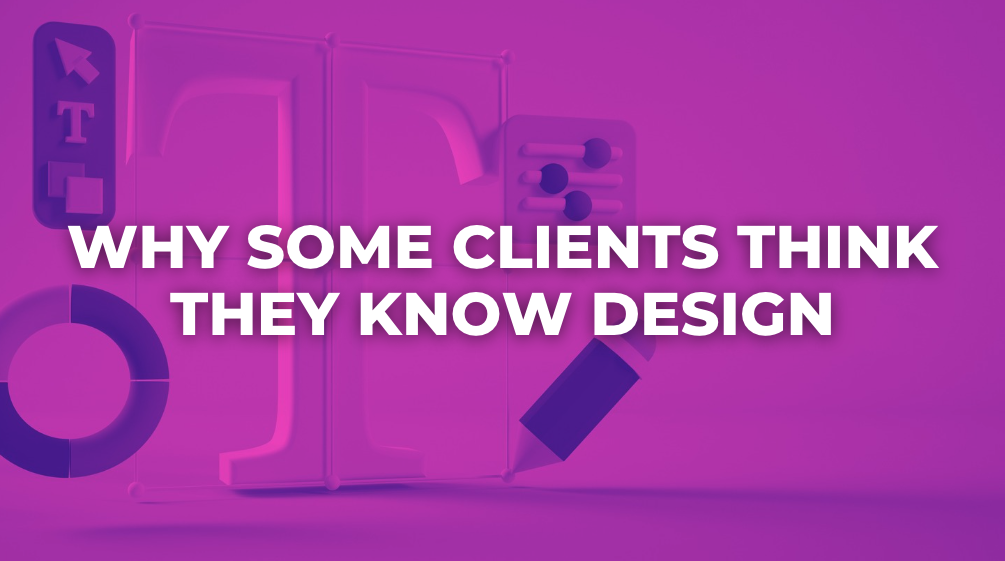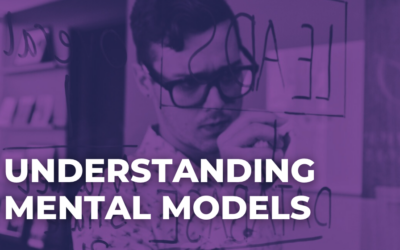I was sitting across from a new client, pen in hand, sketchbook open, ready to dive into their vision for their website.
“So,” I began, “tell me about the most important thing you want your website to communicate.”
There was a pause. Then, instead of a direct answer, I got a winding monologue about their company’s history, a TED Talk on their industry trends, and a strangely detailed explanation of why their cousin’s roommate, who “dabbles in Photoshop,” swears by a certain shade of blue.
I’ve been a professional graphic designer for over 25 years, and I can tell you, this isn’t rare. There’s a certain type of client who, when asked a simple question, doesn’t just answer it. Instead, they try to decode my intent, redirect the conversation, or pile on so much irrelevant information that I feel like an archaeologist sifting through layers of sediment, searching for the one golden artifact I actually need.
But why does this happen? And more importantly, how do you handle it?
The Psychology Behind the Over-Explaining Client
There are a few reasons why clients struggle to give clear, direct answers:
1. The Need for Control
Some clients feel uneasy handing over creative power. They’re not sure what I’ll do with their answers, so they reframe my questions to fit what they think should be the focus. It’s a defense mechanism, an attempt to maintain control over something they don’t fully understand.
2. The “I Know Design Too” Syndrome
These are the clients who have watched enough YouTube tutorials or dabbled in Canva and now feel they can “speak designer.” When I ask a strategic branding question, they might flood me with information I didn’t ask for, because they believe they already know what I should be asking.
3. Fear of Being Wrong
Answering a direct question requires confidence. Some clients worry they’ll give the “wrong” answer, so they hedge their responses with unnecessary context. Instead of “I like modern and bold,” they’ll say, “Well, I don’t want it to look too modern, but also not too classic, and maybe a little bold but not too much…”
4. Mistrust of the Creative Process
Maybe they’ve been burned by designers before. Maybe they think every question is a trap leading to an upsell or a creative choice they won’t like. Instead of answering honestly, they try to outmaneuver me, as if we’re playing chess rather than collaborating on a project.
5. Decision Fatigue
Some clients simply don’t have the mental bandwidth to answer questions efficiently. They make countless decisions in their business every day, and by the time they talk to me, their brains are fried. Instead of answering concisely, they dump every piece of information they have on me, hoping I’ll sort through the noise.
How to Get the Answers You Need (Without the Runaround)
Once you understand why clients do this, you can adjust your approach to keep the conversation on track. Here are a few techniques that work:
1. Redirect Gently but Firmly
If a client starts spiraling, bring them back:
“That’s great background info, but what I really need to know is…”
“That’s helpful context, now, between these two options, which one resonates more with you?”
This keeps the discussion moving without dismissing their input.
2. Use Closed-Ended Questions
Instead of asking, “What kind of vibe are you going for?” (which invites rambling), try:
“Would you describe your brand as modern or traditional?”
“Do you want a bold color palette or something more muted?”
When you give clients a structured choice, they don’t have to overthink their response.
3. Limit Their Options
Instead of asking an open-ended question about fonts or colors, show them three curated choices. Most clients don’t know what they want until they see it, and too many options overwhelm them. Keep it simple.
4. Establish Authority Without Ego
Clients need to trust you, but they won’t if they feel like they’re being dismissed. Reinforce your expertise while validating their input:
“I’ve worked with a lot of businesses like yours, and I find that X approach works best. Here’s why…”
This positions you as the guide, not just the person they hired to push pixels.
At the end of the day, most clients don’t set out to be difficult, they just don’t always know how to express what they want. Instead of getting frustrated, take control of the conversation, guide them gently, and remember: You’re the expert. They hired you for a reason.
And when all else fails, deep breaths. A well-placed, structured question can turn even the most long-winded conversation into a productive one.
Have you dealt with clients like this before? How do you handle them? Let’s discuss in the comments!






0 Comments